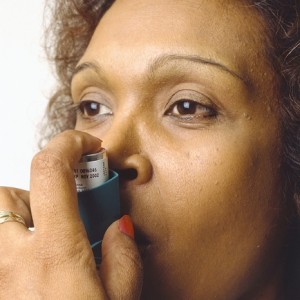
More evidence that low-calorie sweeteners are bad for your health
Studies show that artificial sweeteners can raise the risk of hypertension, metabolic syndrome, type 2 diabetes and heart disease, including stroke.

Natural Health News — A new study has found strong evidence for a link between cleaning jobs – and the chemicals these often involve – and risk of developing asthma.
Researchers at Imperial College London tracked the occurrence of asthma in a large group of 9,488 people born in Britain in 1958. Not including those who had asthma as children, 9% had developed asthma by age 42.
Risks in the workplace were responsible for one in six cases of adult onset asthma – even more than the one in nine cases attributed to smoking, according to the analysis published in the journal Thorax.
There are many occupations that are thought to cause asthma. In this study, 18 occupations were clearly linked with asthma risk, four of which were cleaning jobs and a further three of which were likely to involve exposure to cleaning products.
Besides cleaning products, flour, enzymes, metals, and textiles were among materials in the workplace identified in the study as being linked to asthma risk.
High risk occupations
Around one in four participants had only ever worked in a job that was zero risk, say the researchers. Just under one in 10 (8%) had ever been exposed to high risk agents; while a further 28% had ever been exposed to low risk agents. Around one in three (34%) had ever been exposed to both.
The start of asthma in adulthood was clearly linked to 18 types of job: farming more than quadrupled the risk; hairdressing almost doubled the risk; and printing tripled the risk. Four of these 18 jobs were cleaning jobs, and a further three were likely to involve exposure to cleaning agents.
After taking account of factors likely to influence the results, such as smoking and other aspects of lifestyle, people exposed to low risk agents were found to be 20% more likely to have asthma diagnosed as an adult than those who had not been exposed to any risk.
Those exposed only to high risk agents were 53% more likely to have the condition, while those exposed to both types of agents were 34% more likely to do so.
Raising awareness
The study’s lead author, Dr Rebecca Ghosh of the MRC-HPA Centre for Environment and Health at Imperial College London, said: “This study identified 18 occupations that are clearly linked with asthma risk, but there are others that did not show up in our analysis, mainly because they are relatively uncommon.
“Occupational asthma is widely under-recognised by employers, employees and healthcare professionals. Raising awareness that this is an almost entirely preventable disease would be a major step in reducing its incidence.”
Malayka Rahman, Research Analysis and Communications Officer at Asthma UK, which part funded the study, said: “This research has highlighted a new group of people, specifically those working in occupations related to cleaning, such as cleaners or home-based personal care workers, who may have developed adult onset asthma due to exposure to chemicals they work with on a daily basis.
“We advise anyone who works in the industries highlighted in this study and who have experienced breathing problems to discuss this with their GP, and we urge healthcare professionals to make sure they consider possible occupational causes in adult onset asthma and tailor their advice to people with asthma accordingly.”
Around 5.4 million people in the UK have asthma, some of whom suffer as children and some of whom develop the disease in later life. In the US around 25 million people currently suffer form asthma. In Australia the figure is around 2 million or 1 in 10 of the population.
According to the UK government’s Health and Safety Executive a long list of substances are associated with occupational asthma. Previous studies, for instance in 2004, have reached similar conclusions to the current study. Likewise studies into the health risks associated with cleaning work have shown a higher risk of adult asthma.

Please subscribe me to your newsletter mailing list. I have read the
privacy statement